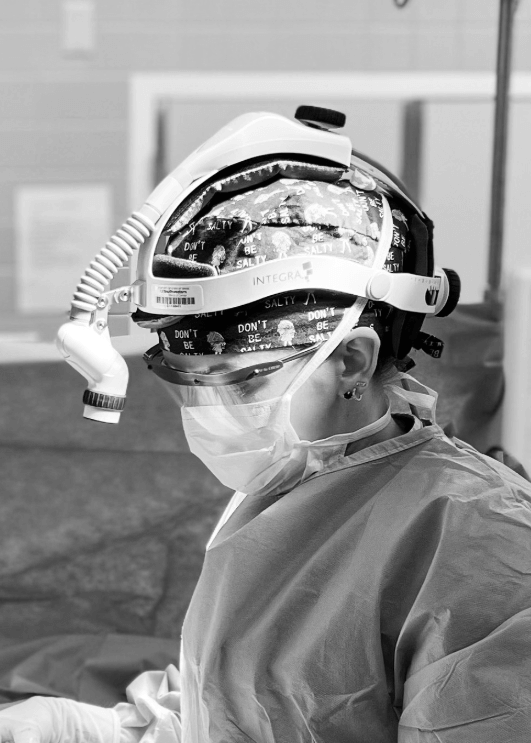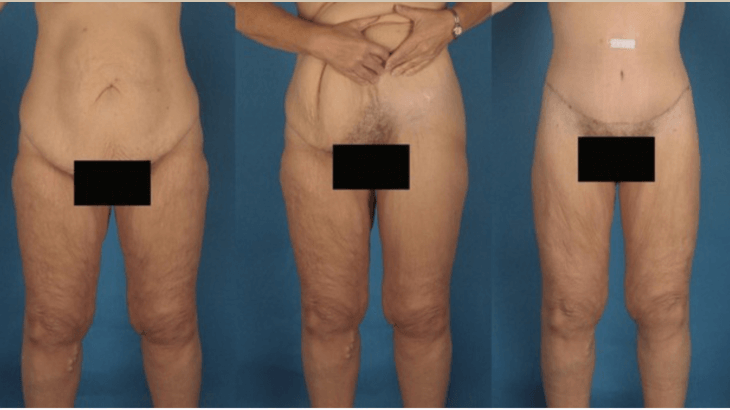Dr. Lindsey's Newsletter #44: Your Guide to a Lower Body Lift After Ozempic
5/21/2025
Body Snatchers: Your Guide to a Lower Body Lift After Ozempic
The plastic surgery community is seeing a surge in demand for lower body lifts, or belt lipectomy surgery. This is likely due to the many success stories of weight loss from Ozempic use. Most of you are probably familiar with tummy tuck surgery, but I would guess not many of you have heard the term belt lipectomy before. Imagine a tummy tuck that includes both the front and back of your torso. A belt lipectomy, also known as a lower body lift, is a surgical procedure designed to remove excess skin and fat from the lower torso and upper legs.
&srotate=0)
The Need for Belt Lipectomy vs. Tummy Tuck
Your genetics program a certain body habitus that dictates where your fat expands when you gain weight during caloric excess. After significant weight loss your excess skin will be located in those areas that expanded the most. Not everyone has the same habitus and because of this not everyone needs the same type of surgery after weight loss. Patients frequently come to my office requesting a tummy tuck after weight loss because it is a well known procedure and their tummy is a point of focus in the mirror. I evaluate all massive weight loss patients according to their anatomy and will determine after examination if a tummy tuck will achieve their goals, or if the surgical solution is a belt lipectomy. Here is a brief guide to the two procedures:
Tummy Tuck:
- Focuses primarily on the abdominal area.
- Removes excess skin and fat from the lower and middle abdomen.
- Tightens abdominal muscles to create a flatter and more toned midsection.
- Incision typically runs horizontally between the hip bones, just above the pubic area.
Belt Lipectomy:
- Addresses a larger area, including the abdomen, lower back, buttocks, and the upper thighs.
- Removes excess skin and fat circumferentially around the waistline.
- Tightens the skin and underlying tissues around the entire lower torso.
- Incision extends around the entire waist, often referred to as a "belt" incision.
&srotate=0)
The figure above is taken from a chapter on belt lipectomy surgery that was written by my mentor in residency who taught me belt lipectomy surgery, Dr
Physical Exam is Everything
The best way to determine what surgery is right for you is to have a surgical consultation with a plastic surgeon. Until I have laid hands on a patient and evaluated their anatomy I cannot predict which surgical procedure is indicated. After a careful evaluation of the anatomy and a detailed conversation about health and medical history, together we make decision that prioritizes patient goals and safety.
Belt Lipectomy Surgery
- Anesthesia: General anesthesia is used to ensure that you are asleep and pain-free throughout the procedure.
- Incision: A circumferential incision is made around the waist, extending to the lower back, similar to a belt. The length and pattern of the incision depend on the amount of excess skin and the areas being treated.
- Removal of Excess Skin and Fat: Excess skin and fat are carefully removed from the abdomen and lower back, with this maneuver the buttocks and thighs are lifted.
- Tightening of Muscles and Tissues: The underlying muscles and tissues may be tightened to enhance the contour and support the newly shaped body. This step is particularly common if there is significant muscle laxity, especially in the abdominal area.
- Repositioning and Suturing: The remaining skin is repositioned and pulled tight to create a smoother and more toned appearance.
Belt Lipectomy Risks and Recovery
It is of utmost importance to be in the hands of a safe plastic surgeon when undergoing a belt lipectomy. The surgery itself is longer and covers a significant surface area of the body which makes the risk profile riskier than other body contouring surgeries. The areas that I focus on as a surgeon include:
- Nutrition optimization - in order to heal a big surgery you need adequate protein and vitamin levels. I require specific labs to determine nutrition status prior to scheduling surgery, and require my patients to count protein and adhere to a nutritious diet.
- Intraoperative risk mitigation - warming blankets, SCDS, compression hose, and proper positioning are important components of minimizing adverse events including blood clots.
- Post operative care - nutrition, compression garments, and early ambulation are the tenants of care after belt lipectomy surgery. I want my patients to have the nutrition to heal the surgical sites, compression garments to minimize accumulation of serum fluid, and frequent walking to decrease the risk of blood clots.
If you are wondering which body contouring procedure is right for you, I encourage you to schedule a consultation with me. The consultation is your opportunity to have expert evaluation of your specific anatomical needs and to learn what surgical options align with your goals and budget. It is always better to be evaluated and informed early so that you can plan successfully.
As always, here's to choosing how we age, on our own terms!
&srotate=0)